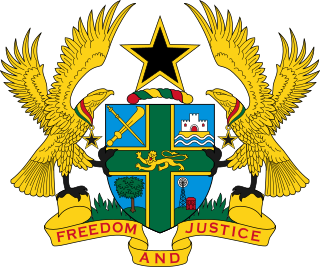Copyright misuse is an equitable defence to copyright infringement in the United States based upon the doctrine of unclean hands. The misuse doctrine provides that the copyright holder engaged in abusive or improper conduct in exploiting or enforcing the copyright will be precluded from enforcing his rights against the infringer. Copyright misuse is often comparable to and draws from the older and more established doctrine of patent misuse, which bars a patentee from obtaining relief for infringement when he extends his patent rights beyond the limited monopoly conferred by the law.
A scène à faire is a scene in a book or film which is almost obligatory for a book or film in that genre. In the U.S. it also refers to a principle in copyright law in which certain elements of a creative work are held to be not protected when they are mandated by or customary to the genre.

Nichols v. Universal Pictures Corporation, 45 F.2d 119, was a United States Court of Appeals for the Second Circuit case on copyright infringement by non-literal copying of a dramatic work. The Court held that copyright protection cannot be extended to the characteristics of stock characters in a story, whether it be a book, play, or film.

Steinberg v. Columbia Pictures Industries, Inc., 663 F. Supp. 706 was a federal case in which artist Saul Steinberg sued various parties involved with producing and promoting the 1984 movie Moscow on the Hudson, claiming that a promotional poster for the movie infringed his copyright in a magazine cover, View of the World from 9th Avenue, he had created for The New Yorker.

Intellectual Reserve, Inc. v. Utah Lighthouse Ministry, Inc., 75 F. Supp. 2d 1290, was a United States district court decision on the subject of deep linking and contributory infringement of copyright.

Religious Technology Center v. Netcom On-Line Communication Services, Inc., 907 F. Supp. 1361, is a U.S. district court case about whether the operator of a computer bulletin board service ("BBS") and Internet access provider that allows that BBS to reach the Internet should be liable for copyright infringement committed by a subscriber of the BBS. The plaintiff Religious Technology Center ("RTC") argued that defendant Netcom was directly, contributorily, and vicariously liable for copyright infringement. Netcom moved for summary judgment, disputing RTC's claims and raising a First Amendment argument and a fair use defense. The district court of the Northern District of California concluded that RTC's claims of direct and vicarious infringement failed, but genuine issues of fact precluded summary judgment on contributory liability and fair use.
Substantial similarity, in US copyright law, is the standard used to determine whether a defendant has infringed the reproduction right of a copyright. The standard arises out of the recognition that the exclusive right to make copies of a work would be meaningless if copyright infringement were limited to making only exact and complete reproductions of a work. Many courts also use "substantial similarity" in place of "probative" or "striking similarity" to describe the level of similarity necessary to prove that copying has occurred. A number of tests have been devised by courts to determine substantial similarity. They may rely on expert or lay observation or both and may subjectively judge the feel of a work or critically analyze its elements.
The Abstraction-Filtration-Comparison test (AFC) is a method of identifying substantial similarity for the purposes of applying copyright law. In particular, the AFC test is used to determine whether non-literal elements of a computer program have been copied by comparing the protectable elements of two programs. The AFC test was developed by the United States Court of Appeals for the Second Circuit in 1992 in its opinion for Computer Associates Int. Inc. v. Altai Inc. It has been widely adopted by United States courts and recognized by courts outside the United States as well.
New Delhi is a 1956 Indian Hindi-language black and white romantic comedy film written by Radhakishen with Inder Raj Anand and directed by Mohan Segal. The film starred Vyjayanthimala and Kishore Kumar in the lead, with Jabeen Jalil, Nana Palsikar, Nazir Hussain, Prabhu Dayal, Dhumal, Brahm Bhardwaj, Radhakrishan, Mumtaz Begum, Mirza Musharraf and Shivraj as the ensemble cast. The film was produced by Mohan Segal himself. The film's score was composed by Shankar Jaikishan duo with lyrics provided by Hasrat Jaipuri and Shailendra, edited by Pratap Dave and was filmed by K. H. Kapadia. The story is about the Punjabi boy Anand and the Tamil girl Janaki who fall in love with each other, but unfortunately were separated by their families.

Ho v. Taflove is a Seventh Circuit case about the copyrightability of scientific data. In 2011, the Seventh Circuit affirmed a 2009 decision of the United States District Court for the Northern District of Illinois holding that the expression of ideas can be copyrighted but not the ideas themselves.

Penguin Group (USA) Inc. v. American Buddha, 640 F.3d 497, was a case in which United States Court of Appeals for the Second Circuit reversed the decision of the United States District Court for the Southern District of New York, which had granted American Buddha's motion to dismiss Penguin Group (USA) Inc. ("Penguin")'s copyright infringement action for lack of personal jurisdiction. The appellate court remanded the case for further proceedings.

Roth Greeting Cards v. United Card Co., 429 F.2d 1106, was a Ninth Circuit case involving the copyright of greeting cards that introduced the "total concept and feel" standard for determining substantial similarity. Courts used this test in later cases such as Reyher v. Children's Television Workshop (1976).
Delrina Corporation v. Triolet Systems Inc, 2002 CanLII 11389, 58 OR (3d) 339, also known as Delrina II, is a 2002 Ontario Court of Appeal case which established the existence of the merger doctrine in Canadian copyright law. The plaintiff, Delrina Corp., sued Triolet Systems Inc. and Brian Duncombe for infringing its copyright of the computer program Sysview by designing similar software, called Assess. The plaintiffs were awarded an interlocutory injunction but ultimately lost at trial. Delrina Corp.’s appeal to the Ontario Court of Appeal was dismissed.

Mandeville-Anthony v. The Walt Disney Company, 11-56441, is a United States Court of Appeals for the Ninth Circuit case in which the Court evaluated whether defendants Pixar, The Walt Disney Company, Disney Enterprises, Inc. and Walt Disney Pictures infringed on Jake Mandeville-Anthony's copyrighted works. Plaintiff Mandeville-Anthony's claim for copyright infringement was first dismissed by the United States District Court for the Central District of California, because the court found that the parties’ works were not substantially similar. Mandeville-Anthony made copyright infringement claims with regards to his works Cookie & Co. and Cars/Auto-Excess/Cars Chaos, an animated television show and movie, that he believed Disney copied in order to make their own films, Cars and Cars 2, both of which were very successful, and the animated television show Cars Toons: Mater's Tall Tales. He also made breach of contract claims stating that he and Disney signed a contract barring Disney from using the ideas contained in his works. The decision was affirmed by the Court of Appeals.
Penguin Books Ltd. v. India Book Distributors and Others, was a decision of the Delhi High Court issued in 1984. Penguin Books Ltd. of England brought a suit for perpetual injunction against the respondents, India Book Distributors of New Delhi, to restrain them from infringing Penguin's territorial license in 23 books, the subject matter of the suit.

Civic Chandran v. Ammini Amma is a landmark case in Indian copyright law decided by Kerala High Court in which the judgment held that even substantial copying of copyrighted work is permissible under the fair dealing exception; if the copying is in public interest.

Warner Bros. Inc. v. American Broadcasting Companies, Inc., 720 F.2d 231, the case of Superman v. The Greatest American Hero, is the third case in a Second Circuit trilogy of 20th century copyright infringement cases in which the proprietors of Superman copyrights sued other companies for publishing fictional exploits of a cape-wearing superhero. Although the plaintiffs were successful in the first two cases, Superman v. Wonderman and Superman v. Captain Marvel, they were completely unsuccessful in Superman v. The Greatest American Hero. The court held that "as a matter of law. .. 'The Greatest American Hero' is not sufficiently similar to the fictional character Superman, the hero of comic books, television, and more recently films, so that claims of copyright infringement and unfair competition may be dismissed without consideration by a jury."

Paul Oliver v. Samuel K. Boateng was a ground-breaking case concerning copyright law in Ghana by the High Court of Justice. It reaffirmed the laws of Copyright relating to the requirements of copyright protection and the law relating to authorship in Ghana. This case elaborated the fact that the law of Copyright in Ghana is a creature of Statute and set out some major general principles in Copyright Law in Ghana.
Pearson Education Limited v Morgan Adzei is one of the novel Ghanaian cases that discusses the extent of application and protection under the Copyright Act of Ghana, Act 690. The primary focus of this case is on the works excluded from copyright eligibility under section 2 of the Copyright Act, Act 690.








